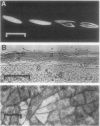Abstract
We previously reported that an apparent water potential disequilibrium is maintained late in muskmelon (Cucumis melo L.) seed development between the embryo and the surrounding fruit tissue (mesocarp). To further investigate the basis of this phenomenon, the permeability characteristics of the tissues surrounding muskmelon embryos (the mucilaginous endocarp, the testa, a 2- to 4-cell-layered perisperm and a single cell layer of endosperm) were examined from 20 to 65 days after anthesis (DAA). Water passes readily through the perisperm envelope (endosperm + perisperm), testa, and endocarp at all stages of development. Electrolyte leakage (conductivity of imbibition solutions) of individual intact seeds, decoated seeds (testa removed), and embryos (testa and perisperm envelope removed) was measured during imbibition of freshly harvested seeds. The testa accounted for up to 80% of the total electrolyte leakage. Leakage from decoated seeds fell by 8- to 10-fold between 25 and 45 DAA. Presence of the perisperm envelope prior to 40 DAA had little effect on leakage, while in more mature seeds, it reduced leakage by 2- to 3-fold. In mature seeds, freezing, soaking in methanol, autoclaving, accelerated aging, and other treatments which killed the embryos had little effect on leakage of intact or decoated seeds, but caused osmotic swelling of the perisperm envelope due to the leakage of solutes from the embryo into the space between the embryo and perisperm. The semipermeability of the perisperm envelope of mature seeds did not depend upon cellular viability or lipid membrane integrity. After maximum seed dry weight is attained (35-40 DAA), the perisperm envelope prevents the diffusion of solutes, but not of water, between the embryo and the surrounding testa, endocarp, and mesocarp tissue.
Full text
PDF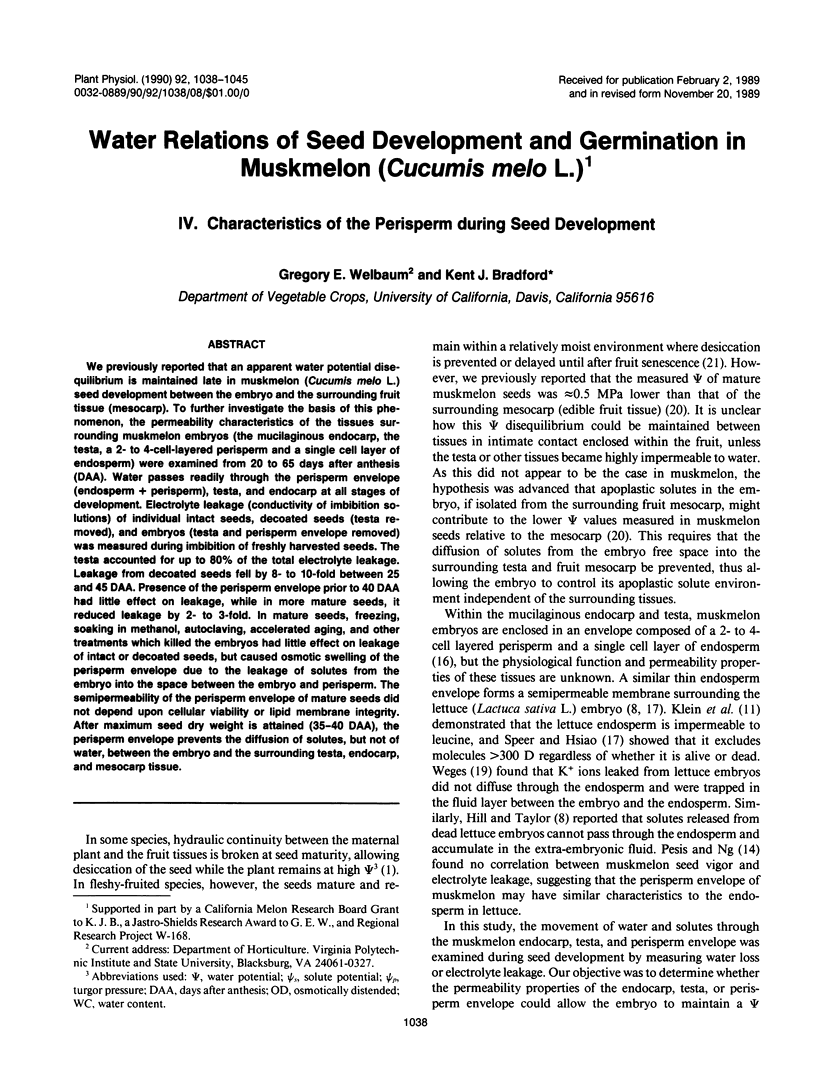
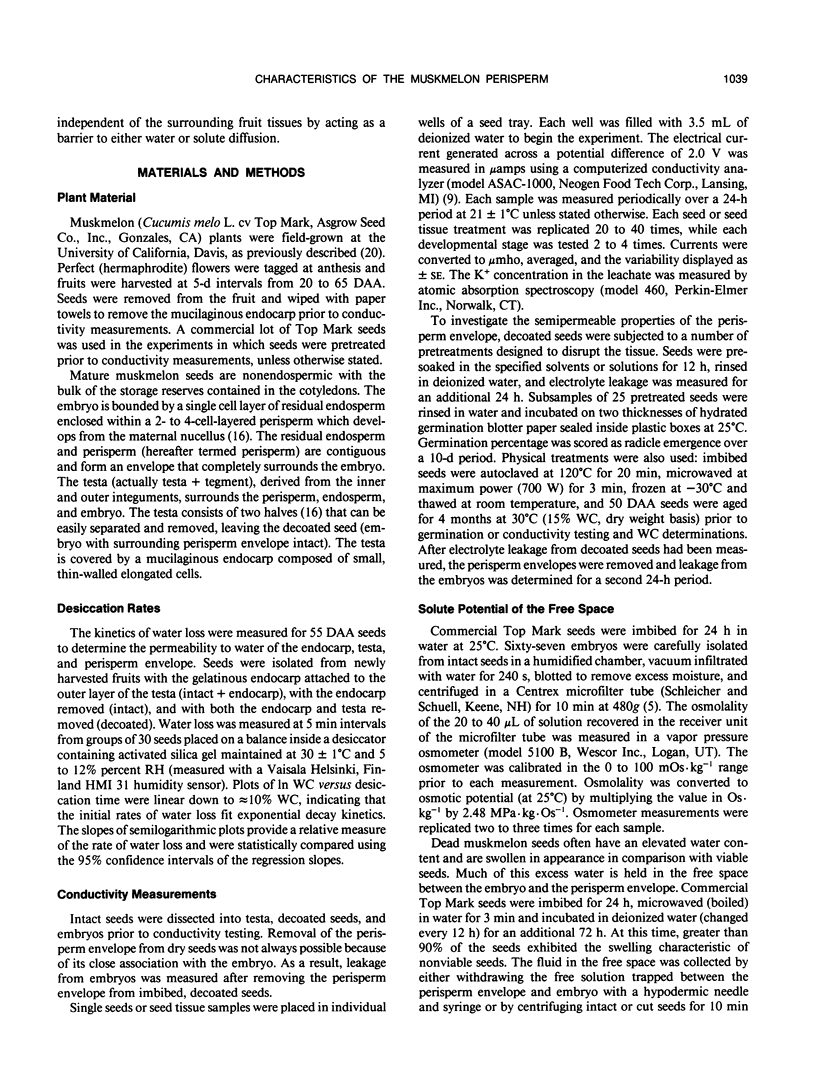
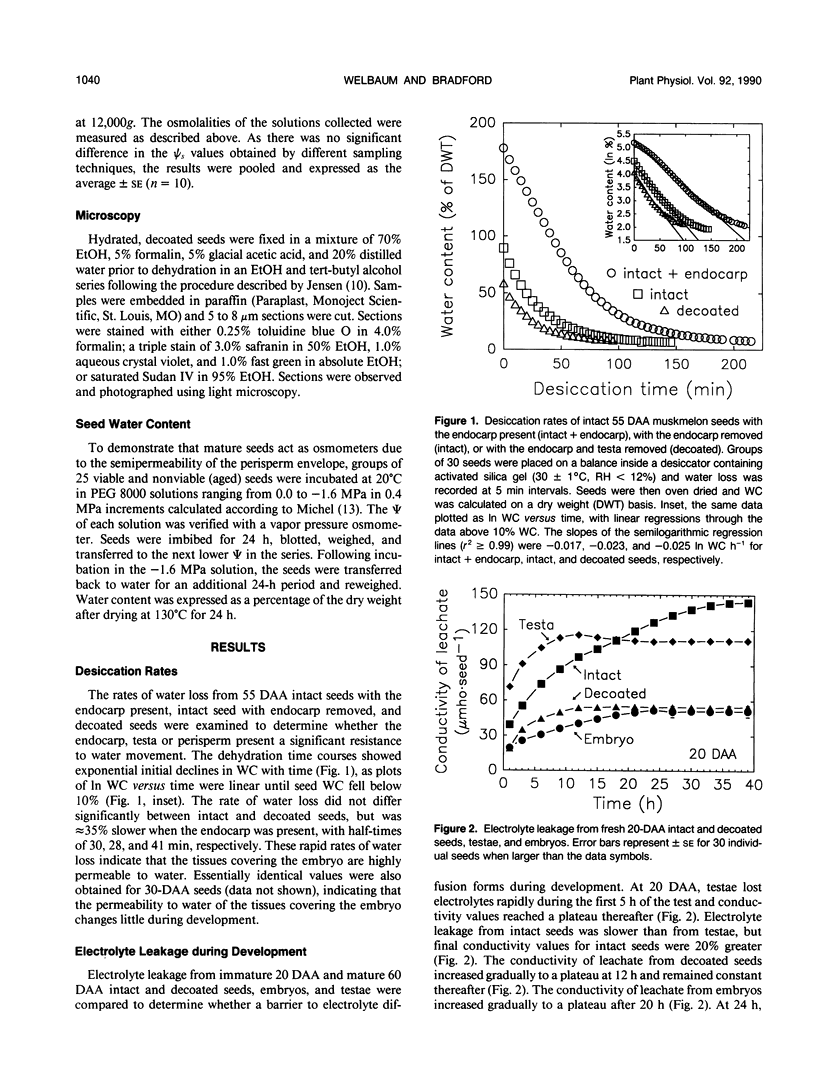
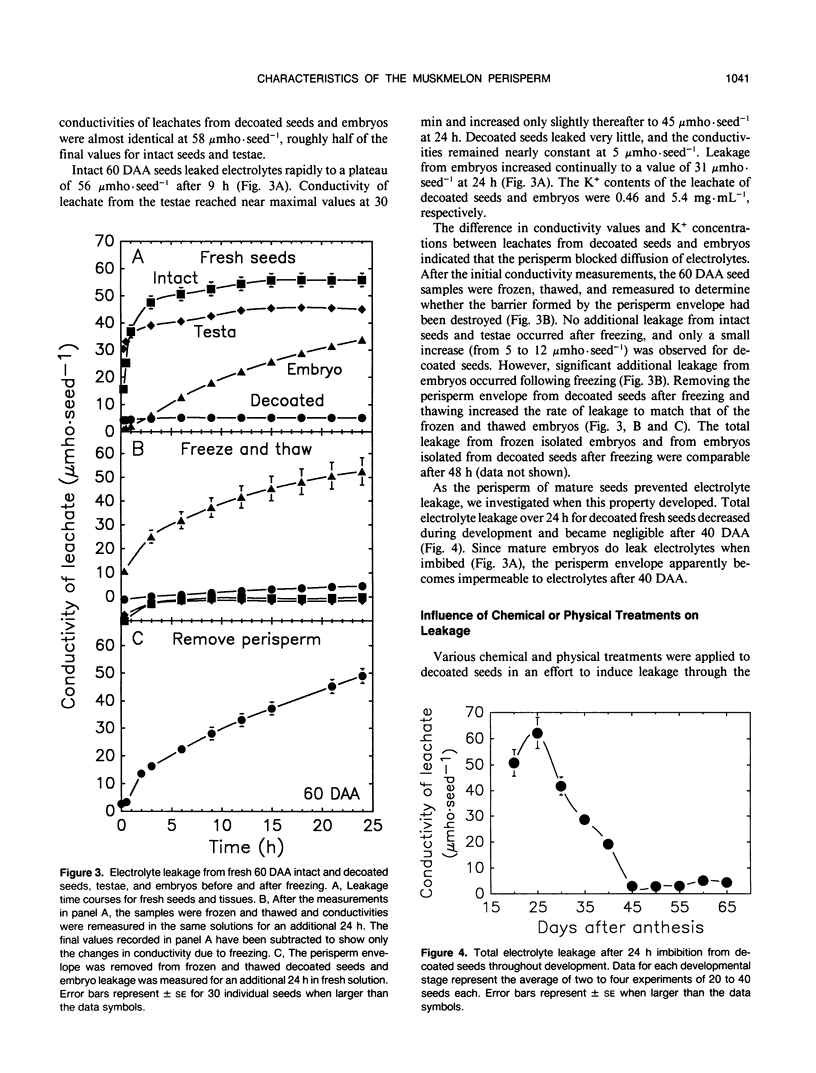
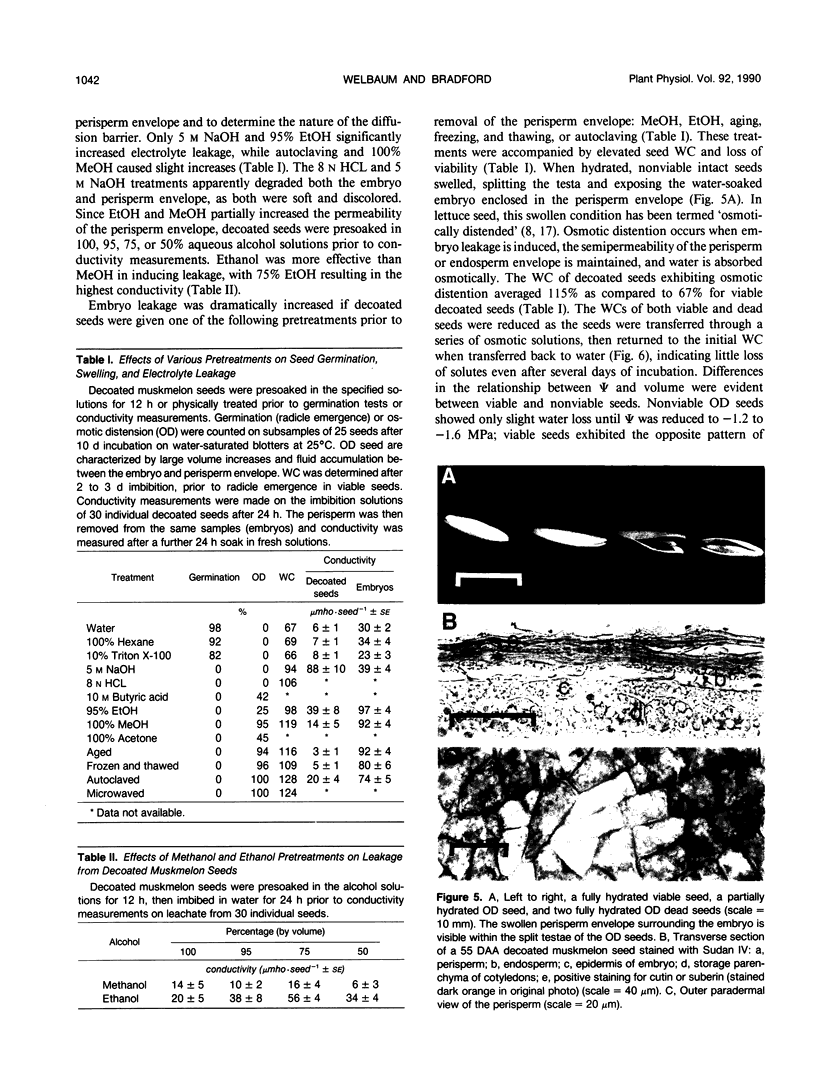
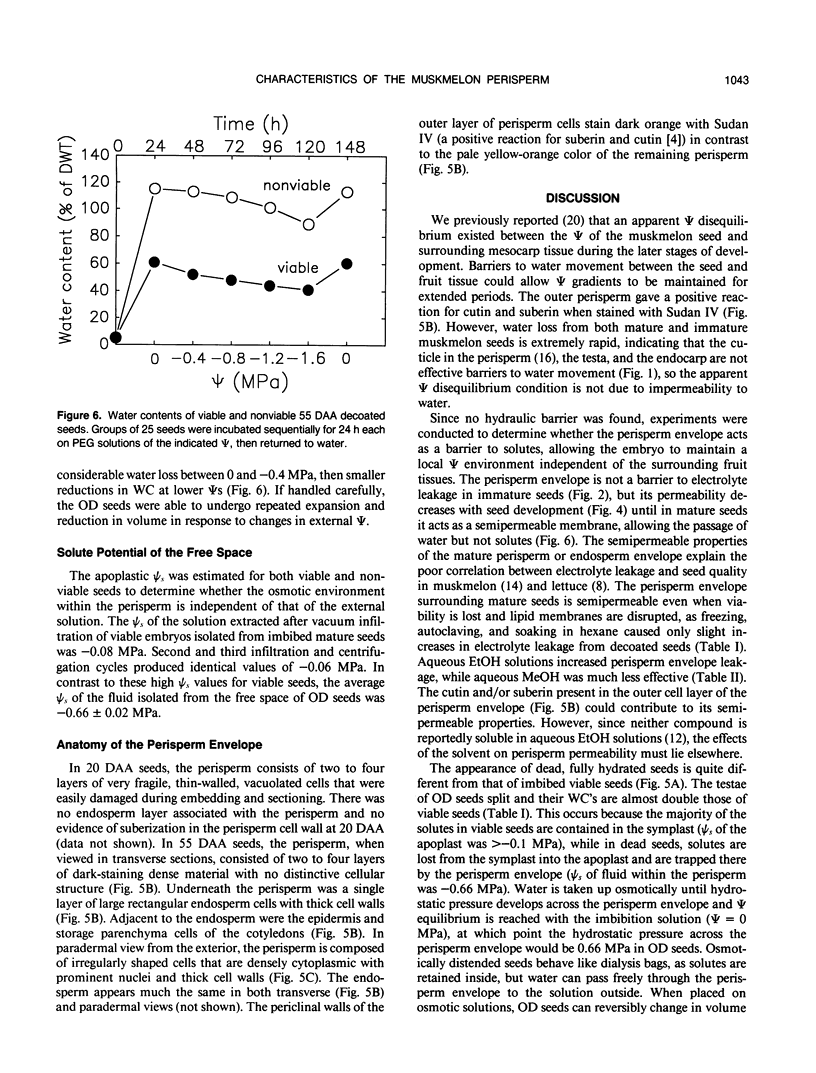
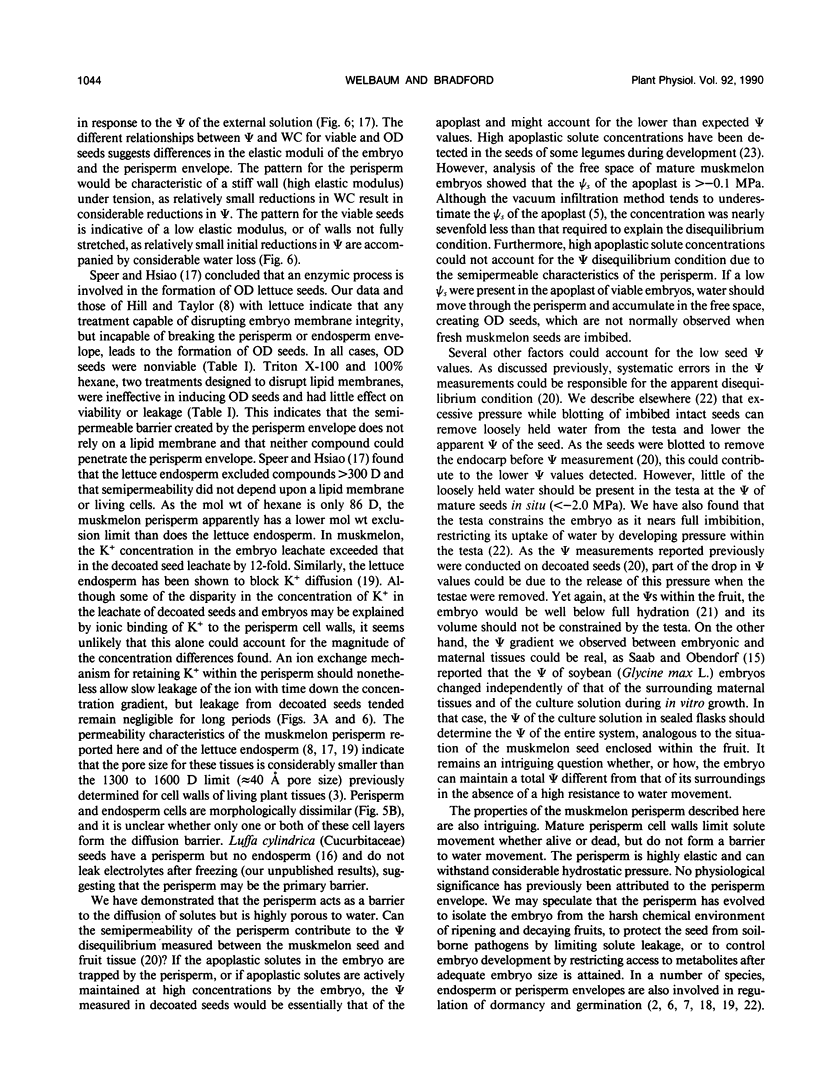
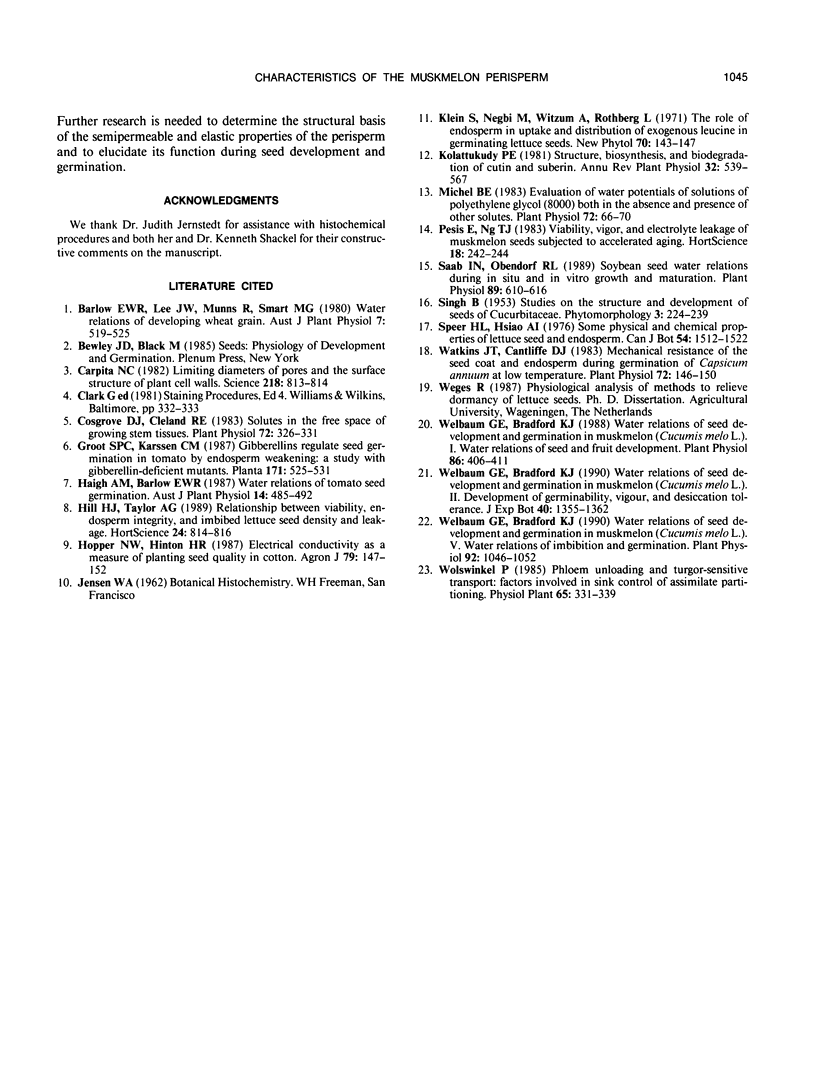
Images in this article
Selected References
These references are in PubMed. This may not be the complete list of references from this article.
- Carpita N. C. Limiting diameters of pores and the surface structure of plant cell walls. Science. 1982 Nov 19;218(4574):813–814. doi: 10.1126/science.218.4574.813. [DOI] [PubMed] [Google Scholar]
- Cosgrove D. J., Cleland R. E. Solutes in the free space of growing stem tissues. Plant Physiol. 1983 Jun;72(2):326–331. doi: 10.1104/pp.72.2.326. [DOI] [PMC free article] [PubMed] [Google Scholar]
- Michel B. E. Evaluation of the water potentials of solutions of polyethylene glycol 8000 both in the absence and presence of other solutes. Plant Physiol. 1983 May;72(1):66–70. doi: 10.1104/pp.72.1.66. [DOI] [PMC free article] [PubMed] [Google Scholar]
- Saab I. N., Obendorf R. L. Soybean Seed Water Relations during in Situ and in Vitro Growth and Maturation. Plant Physiol. 1989 Feb;89(2):610–616. doi: 10.1104/pp.89.2.610. [DOI] [PMC free article] [PubMed] [Google Scholar]
- Watkins J. T., Cantliffe D. J. Mechanical Resistance of the Seed Coat and Endosperm during Germination of Capsicum annuum at Low Temperature. Plant Physiol. 1983 May;72(1):146–150. doi: 10.1104/pp.72.1.146. [DOI] [PMC free article] [PubMed] [Google Scholar]
- Welbaum G. E., Bradford K. J. Water Relations of Seed Development and Germination in Muskmelon (Cucumis melo L.) : I. Water Relations of Seed and Fruit Development. Plant Physiol. 1988 Feb;86(2):406–411. doi: 10.1104/pp.86.2.406. [DOI] [PMC free article] [PubMed] [Google Scholar]
- Welbaum G. E., Bradford K. J. Water Relations of Seed Development and Germination in Muskmelon (Cucumis melo L.) : V. Water Relations of Imbibition and Germination. Plant Physiol. 1990 Apr;92(4):1046–1052. doi: 10.1104/pp.92.4.1046. [DOI] [PMC free article] [PubMed] [Google Scholar]



